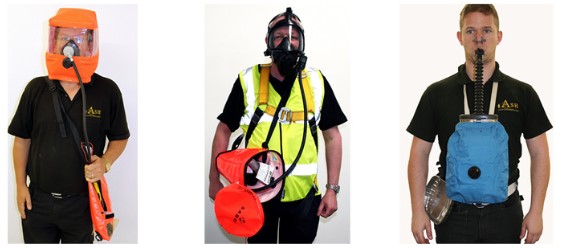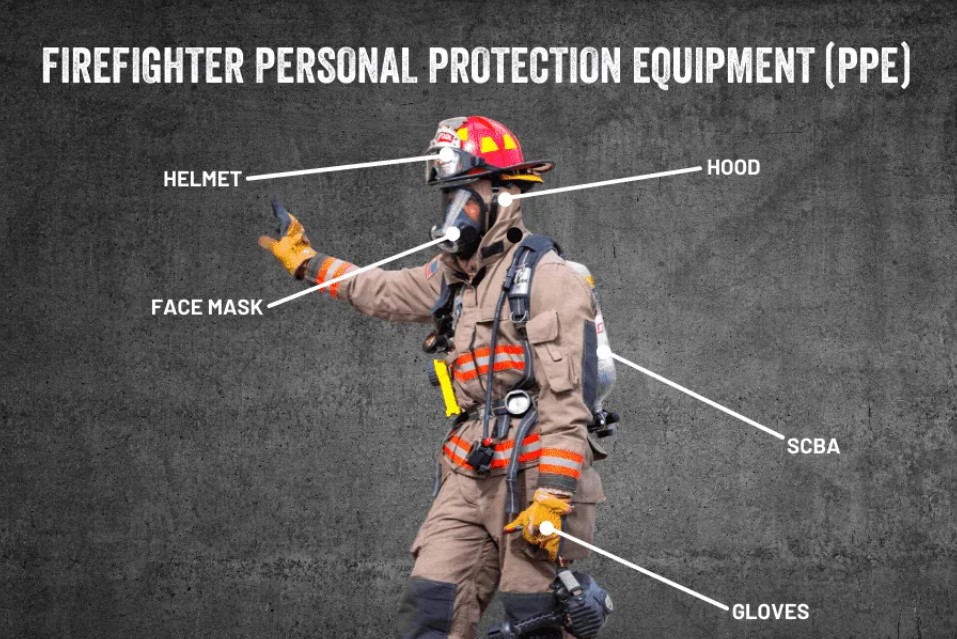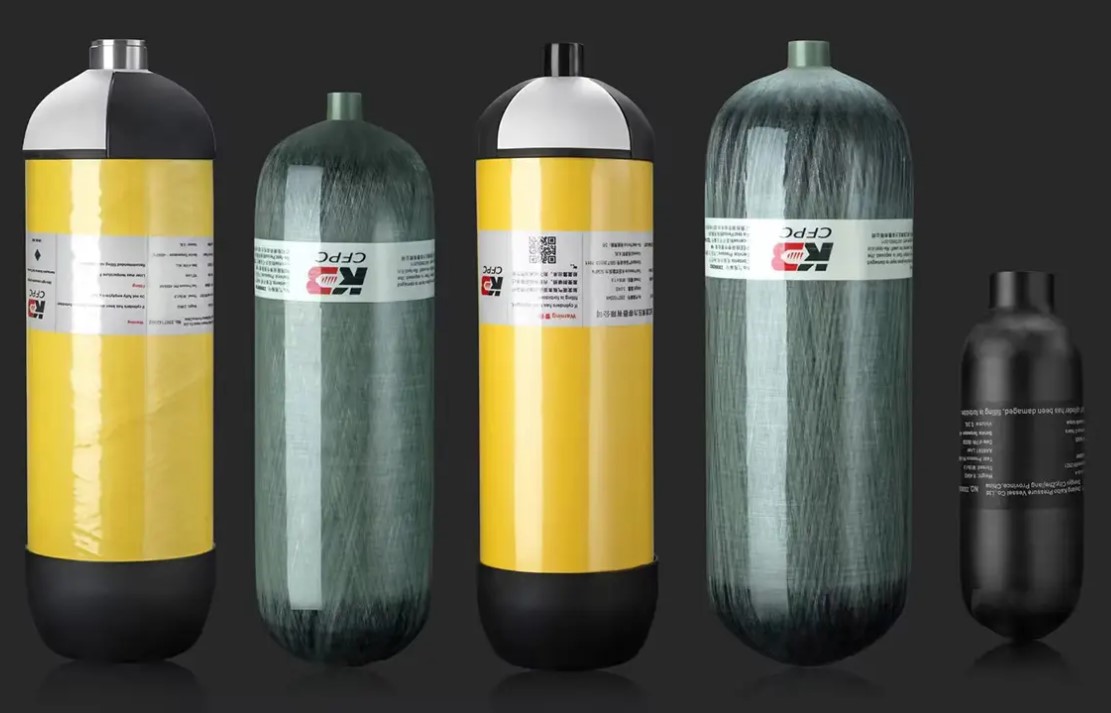In emergency situations where breathable air is compromised, having reliable respiratory protection is crucial. Two key types of equipment used in these scenarios are Emergency Escape Breathing Devices (EEBDs) and Self-Contained Breathing Apparatus (SCBA). While both provide essential protection, they serve different purposes and are designed for distinct use cases. This article explores the differences between EEBDs and SCBAs, with a particular focus on the role of carbon fiber composite cylinders in these devices.
What is an EEBD?
An Emergency Escape Breathing Device (EEBD) is a portable device designed to provide a short-term supply of breathable air in emergency situations. It is intended for use in environments where the air is contaminated or oxygen levels are low, such as during a fire or chemical spill.
Key Features of EEBDs:
- Short-Term Use: EEBDs typically offer a limited duration of air supply, ranging from 5 to 15 minutes. This brief period is intended to allow individuals to safely escape from hazardous conditions to a place of safety.
- Ease of Use: Designed for quick and easy deployment, EEBDs are often simple to operate, requiring minimal training. They are usually stored in accessible locations to ensure they can be used immediately in an emergency.
- Limited Functionality: EEBDs are not designed for extended use or strenuous activities. Their primary function is to provide enough air to facilitate a safe escape, not to support prolonged operations.
What is an SCBA?
A Self-Contained Breathing Apparatus (SCBA) is a more advanced device used for longer-duration operations where breathable air is compromised. SCBAs are commonly used by firefighters, industrial workers, and rescue personnel who need to operate in hazardous environments.
Key Features of SCBAs:
- Longer-Duration Use: SCBAs provide a more extended air supply, typically ranging from 30 to 60 minutes, depending on the cylinder size and the user’s air consumption rate. This extended duration supports both the initial response and ongoing operations.
- Advanced Features: SCBAs are equipped with additional features such as pressure regulators, communication systems, and integrated masks. These features support both the safety and efficiency of users working in dangerous conditions.
- High-Performance Design: SCBAs are designed for continuous use in high-stress environments, making them suitable for tasks such as firefighting, rescue operations, and industrial work.
Carbon Fiber Composite Cylinders in EEBDs and SCBAs
Both EEBDs and SCBAs rely on cylinders to store breathable air, but the design and materials of these cylinders can vary significantly.
Carbon Fiber Composite Cylinders:
- Lightweight and Durable: Carbon fiber composite cylinders are known for their exceptional strength-to-weight ratio. They are significantly lighter than traditional steel or aluminum cylinders, making them easier to carry and maneuver. This is particularly beneficial for SCBAs used in demanding operations and for EEBDs that need to be carried quickly in an emergency.
- High Pressure Capabilities: Carbon fiber cylinders can safely store air at high pressures, often up to 4,500 psi. This allows for a higher air capacity in a smaller, lighter cylinder, which is advantageous for both SCBAs and EEBDs. For SCBAs, this means longer operational time; for EEBDs, it allows for a compact, easily accessible device.
- Enhanced Safety: Carbon fiber composite materials are resistant to corrosion and damage, making them highly durable and reliable. This is crucial for maintaining the integrity of both EEBD and SCBA systems, especially in harsh or unpredictable environments.
Comparing EEBDs and SCBAs
Purpose and Use:
- EEBDs: Designed for quick escape from hazardous environments with a short-duration air supply. They are not intended for use in ongoing operations or extended tasks.
- SCBAs: Designed for longer-duration use, providing a reliable air supply for extended operations such as firefighting or rescue missions.
Air Supply Duration:
- EEBDs: Provide a short-term air supply, typically 5 to 15 minutes, sufficient for escaping from immediate danger.
- SCBAs: Offer a longer air supply, generally ranging from 30 to 60 minutes, supporting extended operations and ensuring a continuous supply of breathable air.
Design and Functionality:
- EEBDs: Simple, portable devices focused on facilitating a safe escape. They have fewer features and are designed for ease of use in emergencies.
- SCBAs: Complex systems equipped with advanced features such as pressure regulators and communication systems. They are built for demanding environments and prolonged use.
Cylinders:
- EEBDs: May use smaller, lighter cylinders with a limited air supply. Carbon fiber composite cylinders in EEBDs provide lightweight and durable options for emergency escape devices.
- SCBAs: Utilize larger cylinders that offer extended air supply. Carbon fiber composite cylinders enhance the performance of SCBAs by providing a higher capacity and reducing the overall weight of the system.
Conclusion
Understanding the differences between EEBDs and SCBAs is essential for selecting the appropriate equipment for specific needs. EEBDs are designed for short-term escape, providing a limited air supply to help individuals exit hazardous situations quickly. SCBAs, on the other hand, are built for longer-duration use, supporting extended operations in challenging environments.
The use of carbon fiber composite cylinders in both EEBDs and SCBAs enhances the performance and safety of these devices. Their lightweight, durable, and high-pressure capabilities make them a valuable component in both emergency escape and prolonged operation scenarios. By choosing the right equipment and ensuring proper maintenance, users can effectively safeguard their safety and survival in hazardous conditions.
Post time: Aug-15-2024



